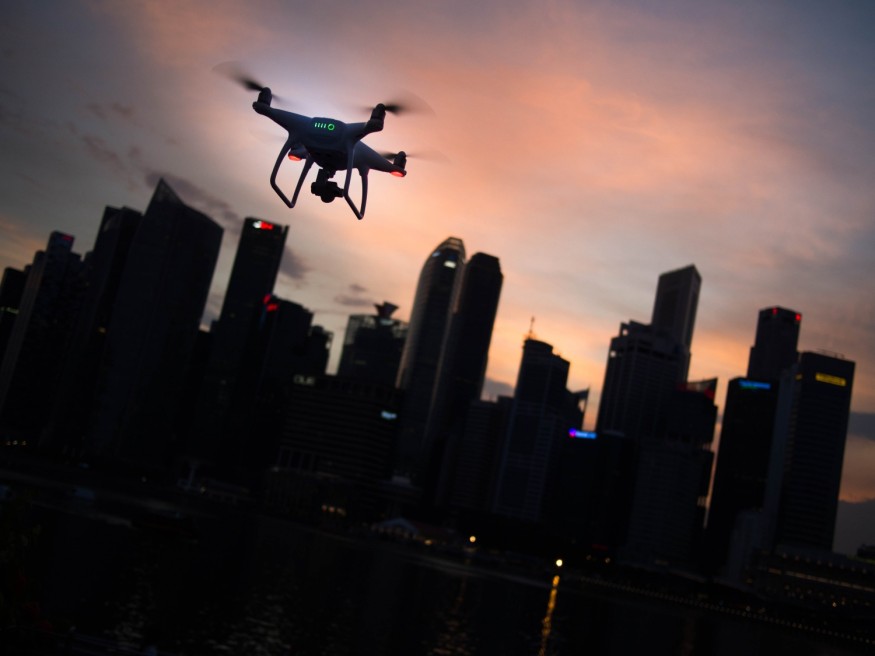Russia has been using drones built in Iran in the Ukraine conflict for months that explode explosives when they reach their target. However, according to Ukrainian military authorities, these products aren't being used since they don't work well in colder climates.
Since the beginning of the fall, the Russian army has relied more and more on strikes using Iranian combat drones in its campaign of aggression against Ukraine. Commanders in Ukraine claim that this is a Shahed-136 kind of weapon. Despite claims that this cargo occurred before the conflict, Iran's Foreign Ministry finally acknowledged making a supply to Russia in early November after first strenuously denying it.
Trend Detail said the Shahed-136 drones feature an engine that allows them to fly up to 2,000 kilometers and a warhead that weighs around 40 kilos. The drones have been attacking various sites, including Ukraine's electricity infrastructure, for months. They instilled dread among the populace by doing this. But as the insider told Trend Detail, no Shahed drones have been seen since mid-November.

Iranian War Drones Allegedly Not Okay for Cold Temperatures
AcOkay for Cold Temperatto Ukrainian news site UNIAN (per Newsweek), Yevgeny Silkin, speaker of the Joint Forces Command for Strategic Communications of the Armed Forces of Ukraine, Shaed-136 kamikaze drones is composed of plastic and other materials that aren't frost-resistant.
The inability of drones to operate in subfreezing conditions, according to Silkin, prevents their usage. Since November 17, the Ukrainian Armed Forces have not detected any Russian drone activity. The speaker said that there have only been training flights by Russian bombers refueling in midair.
"The only comfort of minus temperatures in #Ukraine is that shahed drones can't attack. These Iranian weapons can't take the cold," Ukrainian Parliament member Lesia Vasylyenko tweeted Monday.
The only comfort of minus temperatures in #Ukraine is that shahed drones can’t attack. These Iranian weapons can’t take the cold.
— Lesia Vasylenko (@lesiavasylenko) December 5, 2022
The Russian military has used drones as part of ongoing strikes on vital Ukrainian infrastructure. The U.K. Ministry of Defence disputes the Shahed-136 drones' effectiveness compared to other variants.
The decreasing use of other drones may indicate exhausted stockpiles and a shift in Russian policy, according to Natalya Gumenyuk, head of the Joint Coordinating Press Center of the Southern Security and Defense Forces in Ukraine, according to UNIAN.
She said that the Ukrainian military assaulted a drone training facility in Russia that had Iranian instructors.
Alternative Drones Seen
According to the same Newsweek article, citing the Russian state-run media source Tass, Russian forces are successfully employing uncrewed aerial vehicles (UAVs) dubbed Tachyon to surveillance Ukrainian military units' covert locations.
The gadgets have a thermal imager, a picture and video camera, and can detect enemy targets even when they are well-camouflaged, especially at night.
Samuel Bendett, a senior scholar at the Center for a New American Security and a Russia specialist at the Center for Naval Analyses, told Newsweek that the Tachyon is promoted as being able to operate in temperatures ranging from -30 degrees Celsius to plus-40 degrees Celsius.
Popular Mechanics said Russia's Takion ("Tachyon") is a flying-wing drone that the user launches with a catapult. It was first displayed in 2012. The Takion launches a parachute and floats back to earth after completing its job. The Russian Army and Russian Navy can benefit from the drone's flexibility. It is also said to be used by "coastal commandos," who employ it to look for swimmers and other hazards as well as conduct surveillance during clandestine landing operations.
RELATED ARTICLE : Iranian 'Suicide' Drones: How Russia's New Favorite Weapon Work?
Check out more news and information on Weapons in Science Times.











